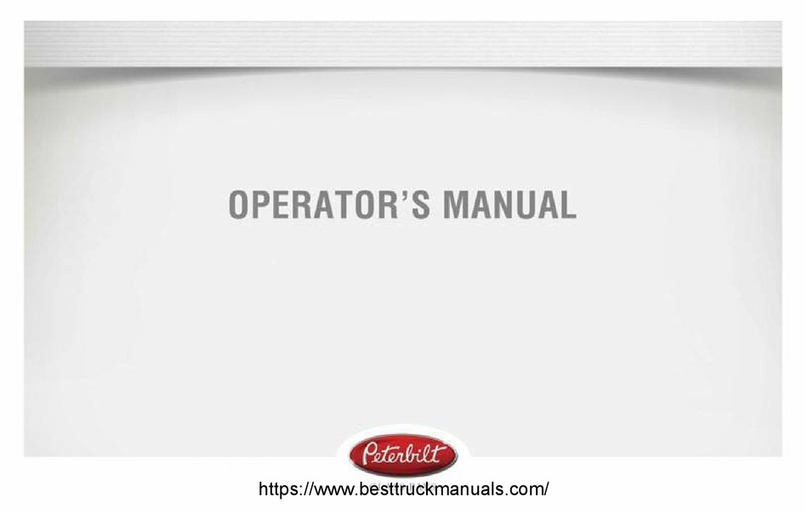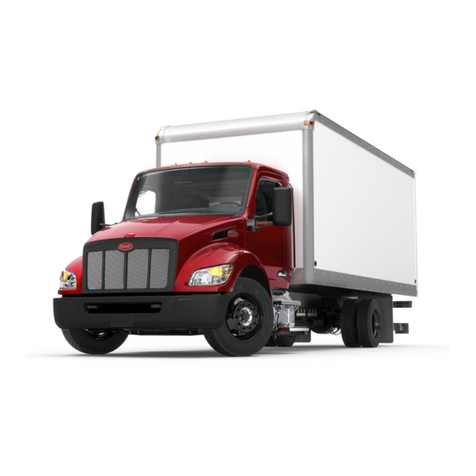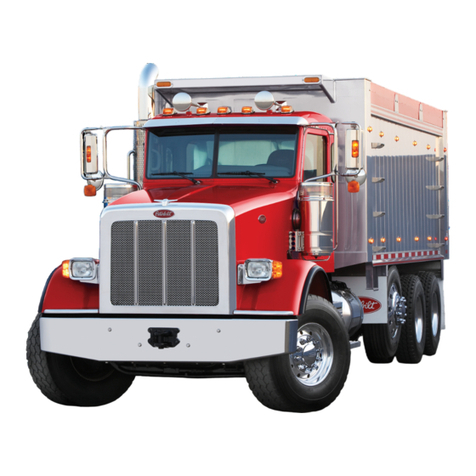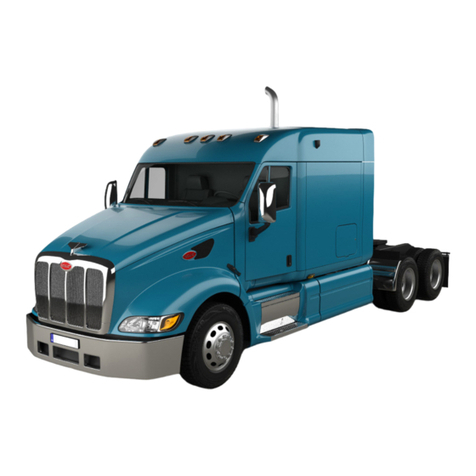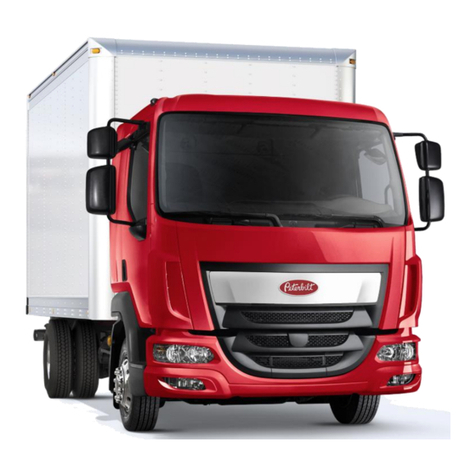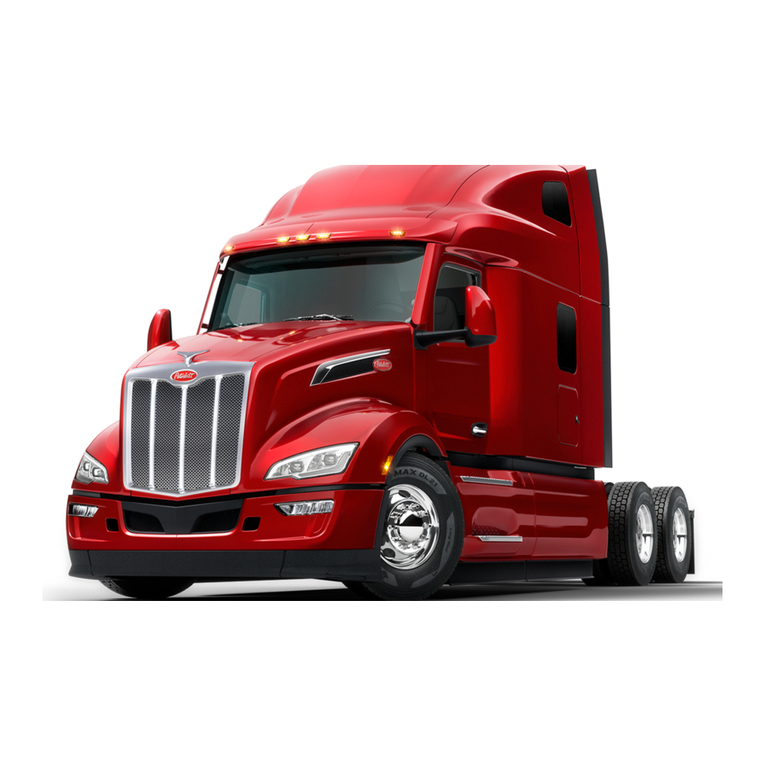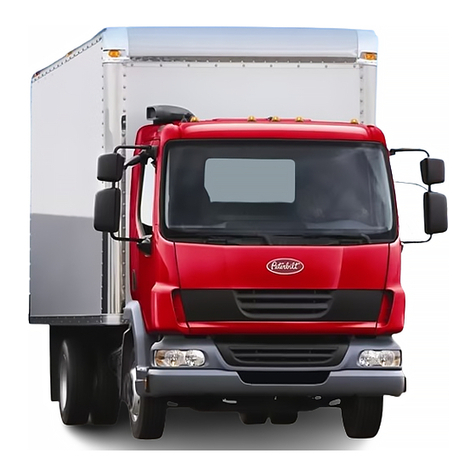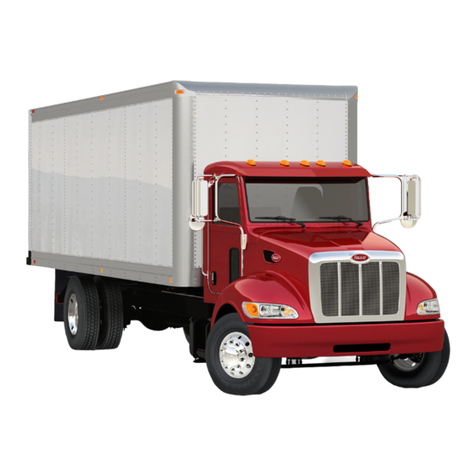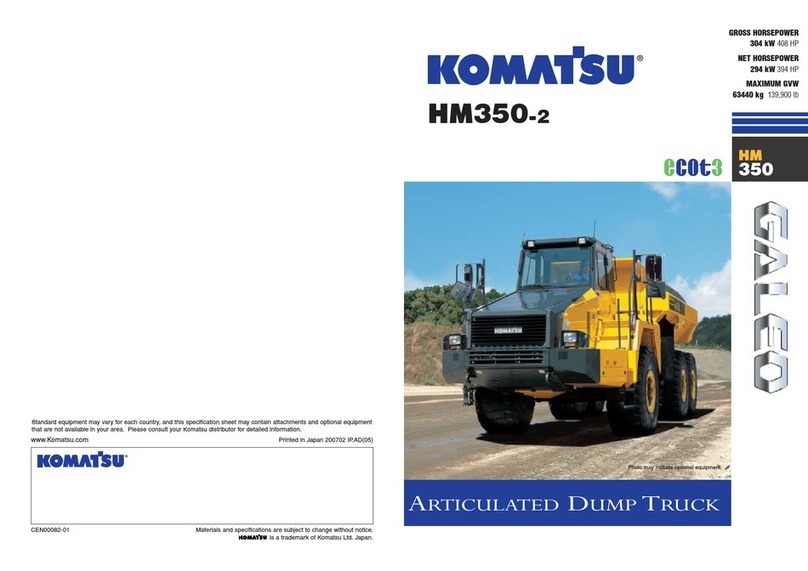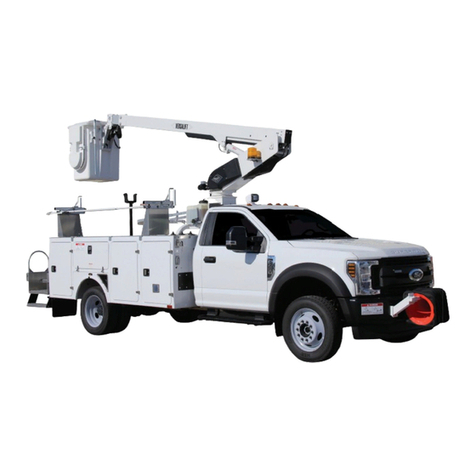
PART 1: INTRODUCTION
PB1319 (CAT. NO. 5296 ) —3— 22-01691 (R02/02)
you have not been trained, get the proper training before you drive.
Only qualified drivers should drive this vehicle.
Every new Peterbilt vehicle is designed to conform to all Federal
Motor Vehicle Safety Standards applicable at the time of manufacture.
However, even with these safety features, continued safe and reliable
operation depends greatly upon regular vehicle maintenance. The
vehicle must be operated within the range of its mechanical capabili-
ties and the limits of its load ratings. See the axle and tire load rating
information located on the driver’s door jamb.
How to Find What You Want
There are several tools built into this manual to help you find what you
need quickly and easily.
First is the Quick Table of Contents. Located at the front of the
manual, this lists the main subjects covered and gives page numbers
where you can find these subjects. Use the Quick Table of Contents
to find information on a large subject like “Maintenance.”
Cross-referenced Citations also help you get the information you
need. If some other part of the manual contains further information
on the subject you are reading about, we’ll indicate that in a cross-ref-
erence like this: (See PART 6: DRIVER’S CHECKLIST). You won’t
have to go searching for more information.
Finally you’ll find a helpful Subject Index. It’s in the back of the man-
ual and alphabetically lists the subjects covered. So if you want infor-
mation on brakes, for example, just look under Brake in the Subject
Index. You’ll find all the pages listed where brakes or braking are dis-
cussed.
A Special Word about Repairs
Your Peterbilt dealer’s service center is the best place to have your
vehicle repaired. You can find Peterbilt dealers all over the country
with the equipment and trained personnel to get you back on the road
quickly - and keep you there.
Your vehicle is a complex machine. Anyone attempting repairs on it
needs good mechanical training and the proper tools. If you are sure
you have these requirements, then you can probably perform some
repairs yourself. However, all warranty repairs must be performed by
an authorized Peterbilt service facility. If you aren’t an experienced
mechanic, or don’t have the right equipment, please leave all repairs
to an authorized service facility. They are the ones equipped to do
the job safely and correctly.

